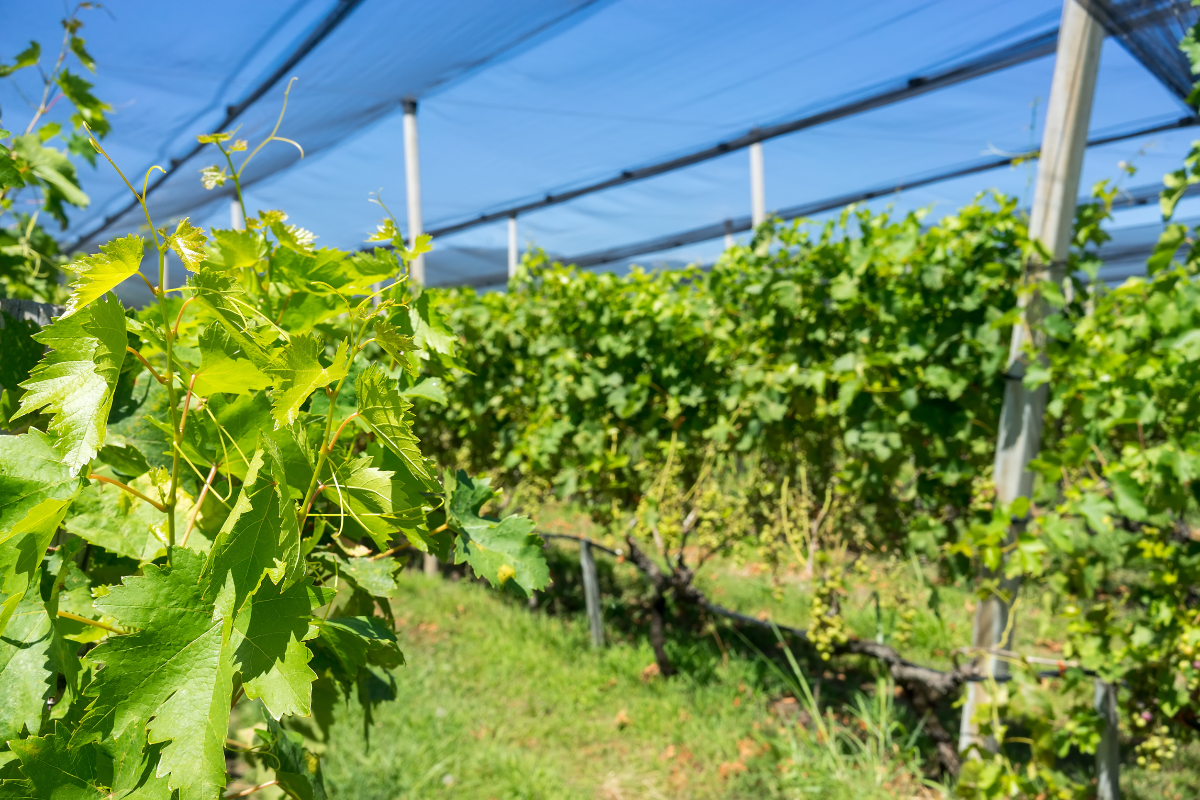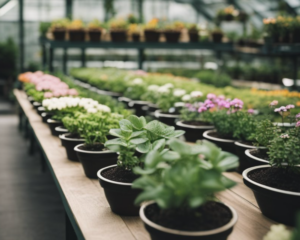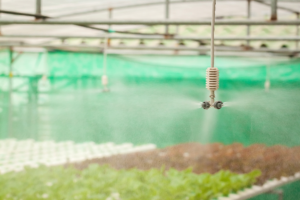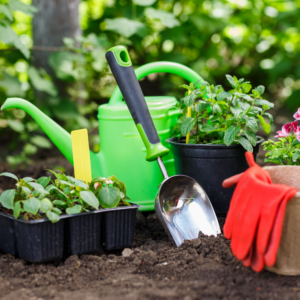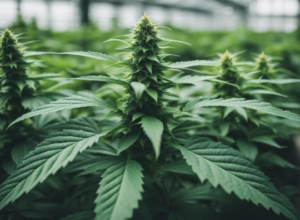Growing plants can be incredibly rewarding, yet certain challenges, like controlling sun exposure, often crop up. That’s where shade cloth comes in handy. I’ve found it to be an essential tool for managing light and heat levels. It’s amazing for protecting my sensitive greens from the harsh midday sun, especially during the hot summer months.
What I love about using shade cloth is its versatility. It comes in different densities that provide varying levels of shade, measured by percentage. For instance, a cloth with a higher percentage blocks out more sunlight, which is great for plants that thrive in more subtle light. Conversely, a lower percentage lets in more sun, perfect for plants that need a bit more warmth and brightness.
Over time, I’ve noticed the benefits of using shade cloth extend beyond just controlling light. It also helps to moderate temperature and protect my plants from wind and pesky birds or insects. This simple adjustment to my gardening practice has improved the health and yield of my plants significantly, making my garden a lush and thriving space.
Benefits of Using Shade Cloth
I’ve found that using shade cloth can significantly benefit plants in a few key ways. It’s not just a cover; it’s a vital part of nurturing healthy plants.
Protection from Harsh Sunlight
Plants, like us, can get too much sun. I use shade cloth to protect my delicate plants from intense sunlight that can lead to scorching and wilting. It acts like sunglasses for plants, filtering out excess light and creating a barrier against potentially harmful UV rays.
Temperature Control
Keeping plants cool during the peak heat can be tough. By casting a shadow over my garden with a shade cloth, I reduce temperatures and create a cooler microclimate. This bit of cooling can make a big difference for my plants on hot days.
Moisture Retention
Ever noticed how quickly soil can dry out in full sun? I’ve seen that a shade cloth helps to keep the soil moist for longer. The reduced evaporation rate under the cloth ensures that my plants stay hydrated and happy without needing constant watering.
Types of Shade Cloth
I’ve found that understanding the different types of shade cloth can save a lot of hassle when creating an ideal environment for my plants. Each type has its own characteristics to consider.
Knitted Shade Cloth
I prefer knitted shade cloth for its durability and flexibility. It’s made by intertwining threads, which allows it to stretch without tearing. Here’s a quick glance at its properties:
- Longevity: Lasts 10+ years
- Air Flow: Superior breathability
- Light Diffusion: Even and prevents hot spots
Woven Shade Cloth
When I need something more affordable for temporary solutions, I opt for woven shade cloth. It’s made from woven strips and tends to be less expensive. However, it has some downsides:
- Durability: Prone to fraying and unraveling
- Rigidity: Less give than knitted types
- Lifespan: Generally shorter, about 5 years
Aluminet Shade Cloth
Whenever I tackle the challenge of extreme temperatures, Aluminet is my go-to. It’s highly reflective and provides a cooling effect by reflecting sunlight. It also helps with:
- Temperature Control: Excellent at reducing heat load
- Reflectivity: High thermal reflectivity for cooler temperatures under the cloth
Shade Cloth Density
In choosing the right shade cloth for my plants, the density of the cloth is the key factor. It determines how much light gets through and can affect how my plants grow.
Light Density
I’ve found that light-density shade cloth allows about 30-50% of light to pass. This kind is perfect for plants that require more sunlight, like vegetables. Here’s a quick breakdown:
- Light Transmission: 30-50%
- Best for: Vegetables, some flowering plants
Medium Density
For a balanced approach, I go for medium-density shade mesh, which cuts out 50-70% of sunlight. This density is suitable for:
- Light Transmission: 50-70%
- Good for: Herbs, some perennials
Heavy Density
When my plants need more protection, I opt for heavy-density shade cloth, blocking about 70-90% of light. It’s ideal for delicate plants or harsh climates:
- Light Transmission: 70-90%
- Ideal for: Shade-loving plants, nurseries
Selecting the Right Shade Cloth
When I pick a shade cloth for my plants, I look at the plant type, local climate, and material durability to make the right choice.
Plant Type Considerations
Different plants have varying light and shade requirements. I create a table detailing the percentage of shade that works well for certain plant types. For example:
- Vegetables: I often use 30-50% shade cloth to protect leafy greens and prevent bolting.
- Orchids: These prefer around 70% shade to mimic their natural, dappled-light habitat.
- Fruiting plants: For tomatoes and peppers, I go with 30-40% to ensure adequate light for fruiting.
It’s crucial to adjust the shade based on the specific needs of my plants.
Climate Factors
My local climate heavily influences my shade cloth choice. I consider the following:
- Intensity of sunlight: A higher percentage shade cloth, like 70-90%, is my go-to in areas with intense sun.
- Air circulation: I ensure the cloth allows for good airflow to prevent heat buildup, selecting a material that is porous.
- Seasonal changes: If I’m in an area with significant seasonal variation, I opt for an adjustable setup or multiple cloths with different shade percentages to swap out as needed.
Durability and Longevity
I invest in a durable shade cloth that will last multiple seasons. Here’s what I bear in mind:
- Material: High-density polyethylene (HDPE) is my preference for its resistance to UV damage and tear strength.
- UV stabilization: I always opt for UV-stabilized shade cloths to prevent degradation and extend the life of the cloth.
- Reinforced edges: To avoid fraying and ensure easy installation, I look for cloths with reinforced edges and grommets.
Picking the right shade cloth is a blend of understanding my plant’s needs, local climate, and the quality of the material.
Installation Tips
When installing shade cloth, I make sure to set up a sturdy frame, secure the cloth properly, and have a plan for regular adjustments and maintenance.
Proper Framework Setup
First, I always check the strength and stability of the structure I’m planning to attach the shade cloth to. Whether it’s a freestanding frame or an existing pergola, it must be capable of supporting the cloth, especially on windy days.
- Materials: Use durable materials such as galvanized steel or pressure-treated wood for the framework.
- Design: The design should promote good tension across the cloth to avoid sagging.
- Anchor Points: Make sure they are evenly spaced to ensure an even distribution of stress on the cloth.
Securing the Cloth
To secure the shade cloth, I start at one corner and work my way across, pulling it taut as I go. The aim is to prevent any flapping or damage caused by wind.
- Attachment Methods: Clip or tie the corners first, then secure the sides.
- Use zip ties or shade cloth clips
- Tie wraps should be placed every 2 feet along the edges
Adjustment and Maintenance
I regularly inspect the shade cloth and its attachments to ensure everything is holding up as it should be. Over time, adjustments might be necessary due to weather conditions.
- Inspection Schedule: Check the setup monthly or after severe weather.
- Cleaning: Remove debris and wash the cloth gently to prevent damage and maintain shade quality.
Watering Practices with Shade Cloth
When I use shade cloth for my plants, I adjust my watering habits to cater to the reduced evaporation rate. Shade cloth, by its nature, keeps things cooler underneath and therefore, water tends to stick around longer.
- Morning Watering: I water my plants early in the morning. This gives them enough moisture to deal with the heat of the day, but the cooler temperatures mean less immediate evaporation.
The presence of shade cloth doesn’t change the fundamental needs of plants; they still require sufficient water. However, the watering frequency might be less. Here’s a simple guideline:
I always remember to check the soil moisture before watering. If it’s still moist from the last watering, I wait another day. I use my finger to test the soil, feeling for moisture up to the second knuckle.
Additionally, I use a drip irrigation system under the shade cloth for even water distribution. This minimizes water waste and ensures my plants get the hydration they need right at the roots, where it counts. I find that this system, paired with the shade cloth, reduces water usage and keeps my plants healthy in heat-sensitive periods.
Common Mistakes to Avoid
When selecting shade cloth, I’ve found that it’s all too easy to make a few common errors.
Choosing the Wrong Density: First up, remember that not all plants need the same amount of shade. I use a 30-50% cloth for veggies, while more sensitive plants might need 70%.
Not Securing the Cloth Properly: It’s essential for me to anchor my shade cloth firmly. If I don’t, wind can send it flying. I make sure to attach it with clips or ties at regular intervals to keep it in place.
Overlooking Plant Growth: Plants grow (obviously!), and I have to account for this when installing my shade cloth. If I don’t leave enough room, plants can become squished and misshapen.
Not Considering the Climate: I always consider my local climate before installing shade cloth. In cooler climates, too much shade can lead to dampness and disease.
Forgetting about Watering Needs: With shade cloth in place, I’ve noticed that watering routines may change. The soil retains moisture longer, so I check the soil before watering to avoid overwatering.
Ignoring the Material Quality: I never compromise on quality. Cheaper materials can deteriorate quickly and I end up replacing them more often, which is not cost-effective in the long run.
These tips have helped me steer clear of setbacks and ensure my plants thrive under the protection they need.
Optimizing Plant Growth
When I use shade cloth in my garden, I’m aiming to strike a balance. It’s about finding that sweet spot where my plants get enough sunlight without getting scorched. Here’s how I do it:
- Light Transmission: I choose a shade cloth with the right percentage for my plants. Vegetables usually thrive with 30%-50% shade, while more delicate plants like orchids prefer 70%-80%.
- Material: I go for materials that are durable and breathable. For me, knitted shade cloths work great because they resist tearing and let air flow freely.
- Placement: I hang the cloth high enough to avoid direct contact with the foliage. This prevents any damage from heat buildup and means that as the sun moves, different parts of the garden get a bit of shade.
- Timing: I use shade cloth principally during the hottest parts of the year. However, I’m careful to remove or adjust it during overcast days to maximize light exposure.
- Adjustments: I regularly check the condition of my plants. If they show signs of too much heat or too little light, I adjust the shade cloth percentage or positioning.
Using shade cloth is a bit of an art and a science. By paying close attention to how my plants respond, I can ensure they grow healthy and robust.
Seasonal Use of Shade Cloth
In the spring, I often use a light shade cloth to protect my seedlings from the intense midday sun. A shade rate of about 30% is perfect to prevent wilting and sunburn while letting enough light through for growth.
Summer is the peak time for shade cloth. With temperatures soaring, I opt for a higher shade rate, sometimes up to 50-70%. This protects my most vulnerable plants from heat stress and sun damage, especially during heatwaves.
Come fall, the sun’s intensity wanes. So I lower the shade rate back to around 30-40%. It’s enough to shield my plants from the diminishing yet still potent sun, assuring a gentle transition into cooler weather.
In winter, I generally remove the shade cloth, unless I live in a very mild climate. However, for those in warmer zones, a minimal shade rate can protect against occasional brighter days without blocking the precious limited light.
Here’s a quick reference:
- Spring: 30% shade rate
- Summer: 50-70% shade rate
- Fall: 30-40% shade rate
- Winter: Usually remove, or up to 30% in warm climates
Remember, the key is to adjust the shade based on your specific climate and the needs of your plants, as well as the daily weather conditions. Keep an eye on how your plants respond, and don’t be afraid to tweak as necessary.
Frequently Asked Questions
Before we jump into your queries, I’ll tell you this: picking the right shade cloth comes down to plant type, climate, and personal gardening goals.
What’s the ideal percentage of shade cloth for protecting plants?
For most plants, a shade cloth with a density between 30% to 50% works best. It filters out enough sunlight to protect plants from harsh rays while still letting through sufficient light for growth.
Can I use white shade cloth, and how does it compare to other colors?
Yes, I can use white shade cloth. It reflects heat effectively and is ideal for plants that require a lot of light without the added heat. Darker colors, like black, absorb heat and are better for cooler climates.
How do I choose the right shade cloth for my indoor and outdoor plants?
For my indoor plants, a lighter density shade cloth around 15% to 30% is usually enough, since they’re not exposed to direct sunlight. Outdoors, I consider my climate and how much direct sun my plants get. In hot climates, a higher density like 50% or above can be better.
What are some DIY tips for making my own shade cloth set up?
I can easily use old curtains or bedsheets as a temporary solution. For a more durable option, I’ll sew hems around a breathable fabric like burlap and reinforce the corners for easy attachment to my garden structure.
What are affordable alternatives to shade cloth for guarding plants against the sun?
Old window screens, lattice panels, or bamboo mats can be inexpensive alternatives. I can place them strategically to cast shadows during the hottest parts of the day.
Does the percentage of shade cloth really matter for different types of plants?
Absolutely, it does. Tender plants like lettuce need more protection, around 50%, while hardier plants like tomatoes may only need 30%. It’s essential to match the shade cloth percentage with my plants’ specific needs to avoid sunburn or stunted growth.

